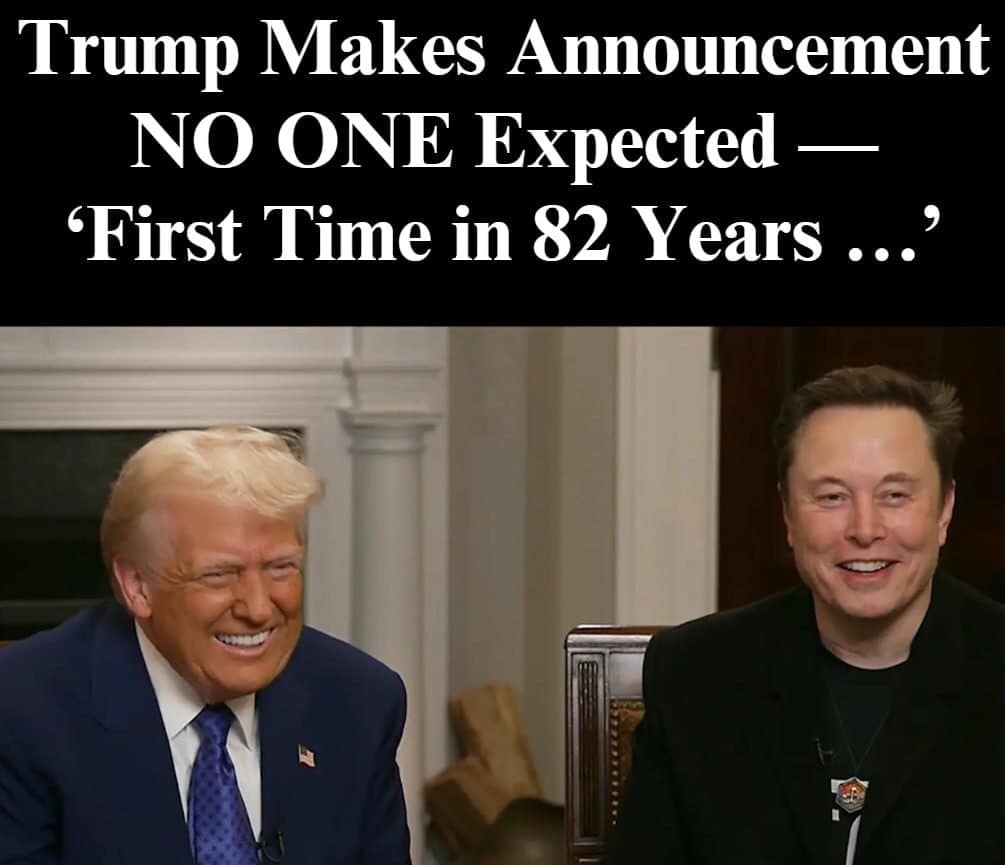Former President Donald Trump has once again stirred national attention with his latest announcement—his plan to personally visit Fort Knox, Kentucky, to verify the presence of the nation’s gold reserves. In a social media video clip, Trump declared, “We’re gonna go into Fort Knox to make sure the gold is there,” a statement that has sparked widespread discussion, speculation, and even controversy.
The Fort Knox Bullion Depository, one of the most secure and secretive facilities in the United States, houses approximately 147.3 million ounces of gold, with an estimated market value of $435 billion. The depository has long been a focal point for conspiracy theories and public curiosity, largely due to the extreme security measures in place and the limited number of inspections allowed over the decades.
A Rare and Historic Inspection
Trump’s announcement is particularly significant given that the last non-authorized inspection of the Fort Knox gold reserves occurred in 1943, during World War II. At that time, then-U.S. President Franklin D. Roosevelt authorized a brief external review due to concerns over national security and economic stability. Since then, only a few select groups have been permitted to inspect the facility.
The last major inspection by outside officials took place in 2017, when then-Treasury Secretary Steven Mnuchin, along with Kentucky Governor Matt Bevin and a small group of congressional representatives, was granted a rare tour of the depository. Mnuchin later tweeted, “Glad gold is safe!” after his visit, but many skeptics argued that such a brief visit was insufficient to confirm the full extent of the reserves.
Why Is Trump Seeking Access Now?
Trump’s decision to personally verify the gold reserves comes amid growing distrust in government institutions and concerns about economic stability. Some of his supporters have echoed long-standing conspiracy theories that the gold reserves at Fort Knox have either been depleted, secretly moved, or replaced with counterfeit bullion.
Trump, known for his populist rhetoric, may be seeking to capitalize on these concerns by positioning himself as the leader who will bring transparency to what some consider a shadowy aspect of U.S. monetary policy. By making this visit a public spectacle, he could further reinforce his image as someone who challenges the status quo and demands accountability.
However, Treasury Secretary Scott Bessent has since responded to Trump’s statement, confirming that the U.S. Department of the Treasury remains open to future inspections for senators or government officials interested in verifying the reserves. Bessent’s remarks suggest that while Trump may not be granted an immediate personal tour, discussions about inspections are not entirely off the table.
Security and Secrecy at Fort Knox
Fort Knox is one of the most secure places in the world, making an unscheduled or unauthorized visit nearly impossible. The facility, which sits within the United States Army base in Kentucky, is guarded by highly trained military personnel, motion sensors, and a network of security systems designed to detect even the slightest intrusion attempts.
The gold inside is kept in reinforced vaults, secured by a 22-ton blast-proof door that can only be opened through a series of complex security protocols. The full access codes are not even known by a single individual; instead, multiple government officials must each input part of the access sequence.
For this reason, even if Trump were granted permission to visit, he would not be able to access the gold vaults without extensive pre-approval and security clearance.
Conspiracy Theories and Public Doubt
For decades, rumors and conspiracy theories have surrounded the gold stored in Fort Knox. Some of the most widely circulated claims include:
- The Gold is Gone: Some believe the U.S. government secretly removed the gold decades ago, using it to prop up the economy or fund covert operations.
- Fake Gold Bars: Another theory suggests that much of the gold in Fort Knox is actually tungsten bars coated in gold, making them virtually indistinguishable from real gold at first glance.
- The Federal Reserve Controls It: Some argue that Fort Knox gold is not under government control but is instead manipulated by the Federal Reserve or private banking interests.
Despite repeated assurances from the U.S. Treasury and Mint officials, these theories persist, partly because of the lack of transparency regarding access to the vaults.
What Happens Next?
It remains unclear whether Trump will be granted access to Fort Knox. Historically, presidents do not visit the depository during their time in office—even Franklin D. Roosevelt, under whose administration the facility was built, never personally inspected the gold.
If Trump does manage to secure a visit, it would be one of the most high-profile inspections in American history. If denied access, it could fuel further speculation and provide Trump with yet another platform to challenge government transparency and federal authority.
Either way, Trump’s push to inspect Fort Knox has reignited public interest in the true state of America’s gold reserves, and the outcome of this endeavor will likely make headlines for weeks to come.
